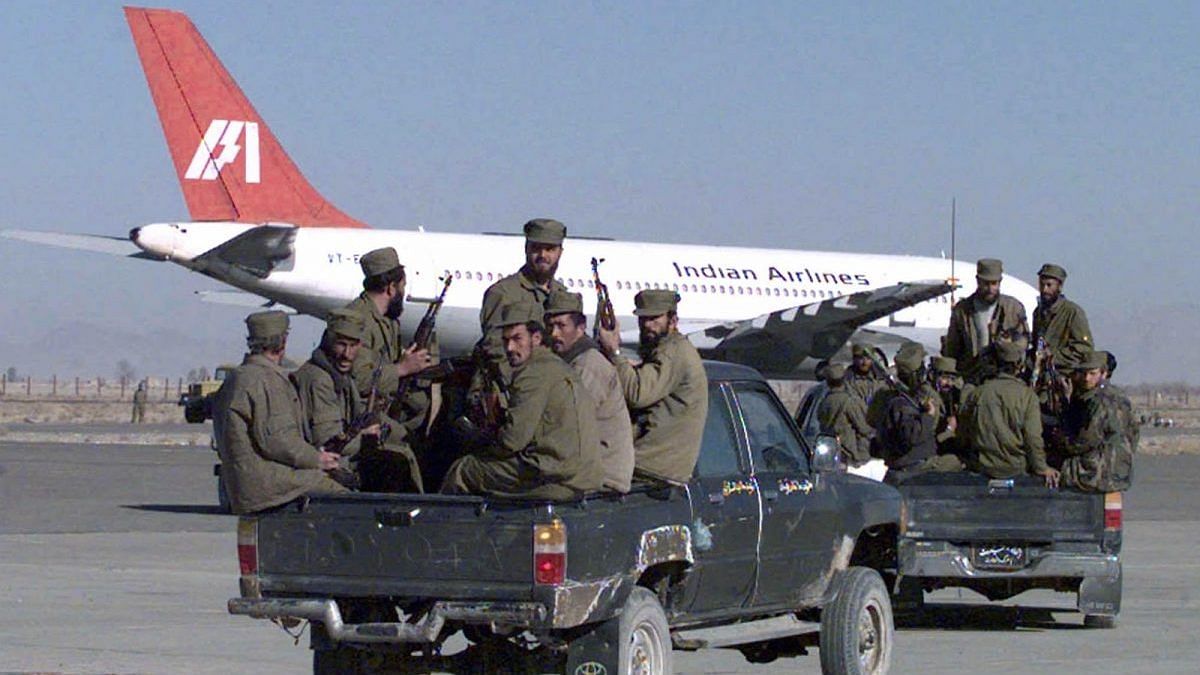On the eve of Christmas in 1999, an Indian Airlines flight (IC 814) with around 180 passengers on board was flying from Kathmandu in Nepal to the Indian capital of New Delhi when it was hijacked and flown to several locations before finally allowed to land in Kandahar, Afghanistan.
The IC 814 was flown by Captain Devi Sharan and his co-pilot Rajinder Kumar. It was around 5:30 PM — as the flight entered the Indian airspace, one of the five terrorists, belonging to the Pakistan-based extremist group Harkat-ul-Mujahideen, got up from his seat and threatened to blow up the plane with a bomb and ordered the pilot to “fly west.”

Following the announcement of the hijacking, four other militants wearing red masks got up and took their positions at different points on the plane to hold the 178 passengers and 11 crew members hostage.
The hijackers ordered the plane to be diverted to Lucknow and then headed towards Lahore. However, Captain Sharan persuaded the militants to land the plane in Amritsar, Punjab, as it was low on fuel.
The plane then landed in Amritsar, where armed personnel of the Punjab police were ready to storm the plane before being directed to abort the mission by the Crisis Management Group in Delhi in order to prevent any casualties.
The aircraft, however, took off again without refueling and, upon the directions of the hijackers, was flown to Lahore, where the Pakistani authorities refused them permission to land and turned off all the lights at the airport.
According to reports, Pakistan took the decision fearing the possible consequences of an Indian hijacked aircraft on its territory.
However, the authorities then realized that the IC 814 had no option other than to crash land due to the lack of fuel. They finally turned on the lights of the airport and allowed the plane to land.
The Lahore airport officials then refueled the aircraft, after which it took off for Dubai; however, by that time, tragedy had already struck.
Newly wedded couple Rupin Katyal (25) and his bride Rachana (20) were on board the flight returning from a trip in Nepal. Within hours of the hijacking, Katyal was stabbed in the chest along with another passenger named Satnam Singh.
While Singh survived, Katyal bled to death before the aircraft even reached Dubai. By the time the aircraft had landed in Dubai, there had been one casualty, and several others were injured. At least 26 passengers were released in Dubai, after which the aircraft was flown to Kandahar in Afghanistan, which was under the control of the Taliban at the time.
The aircraft was surrounded by Taliban militants, who, according to reports, claimed that they were trying to dissuade the hijackers from killing or injuring the hostages. Sources, however, reveal that it was an attempt to foil any Indian military operations against the hijackers.
Reports suggest the Taliban became mediators between the hijackers and the Indian government in order to draw international media attention. The hijackers then demanded the release of three of their militants — Mushtaq Ahmed Zargar, Ahmed Omar Saeed Sheikh, and Maulana Masood Azhar — from India’s custody in exchange for the lives of the passengers and crew on board.
The Indian government was brought to its knees in the negotiation, after which then-Indian Foreign Minister Jaswant Singh went to Kandahar along with the three terrorists.
Following the handing over of the three militants, the hostages were released and on December 21, 1999, were flown back on a special plane. The hijackers, however, ensured their safe passage with the help of a Taliban hostage.
After the incident, India’s Central Bureau of Investigation (CBI) took over the case and charged 10 people, out of which seven, including the five hijackers, could not be captured and were reported to be in Pakistan.
Follow EurAsian Times on Google News